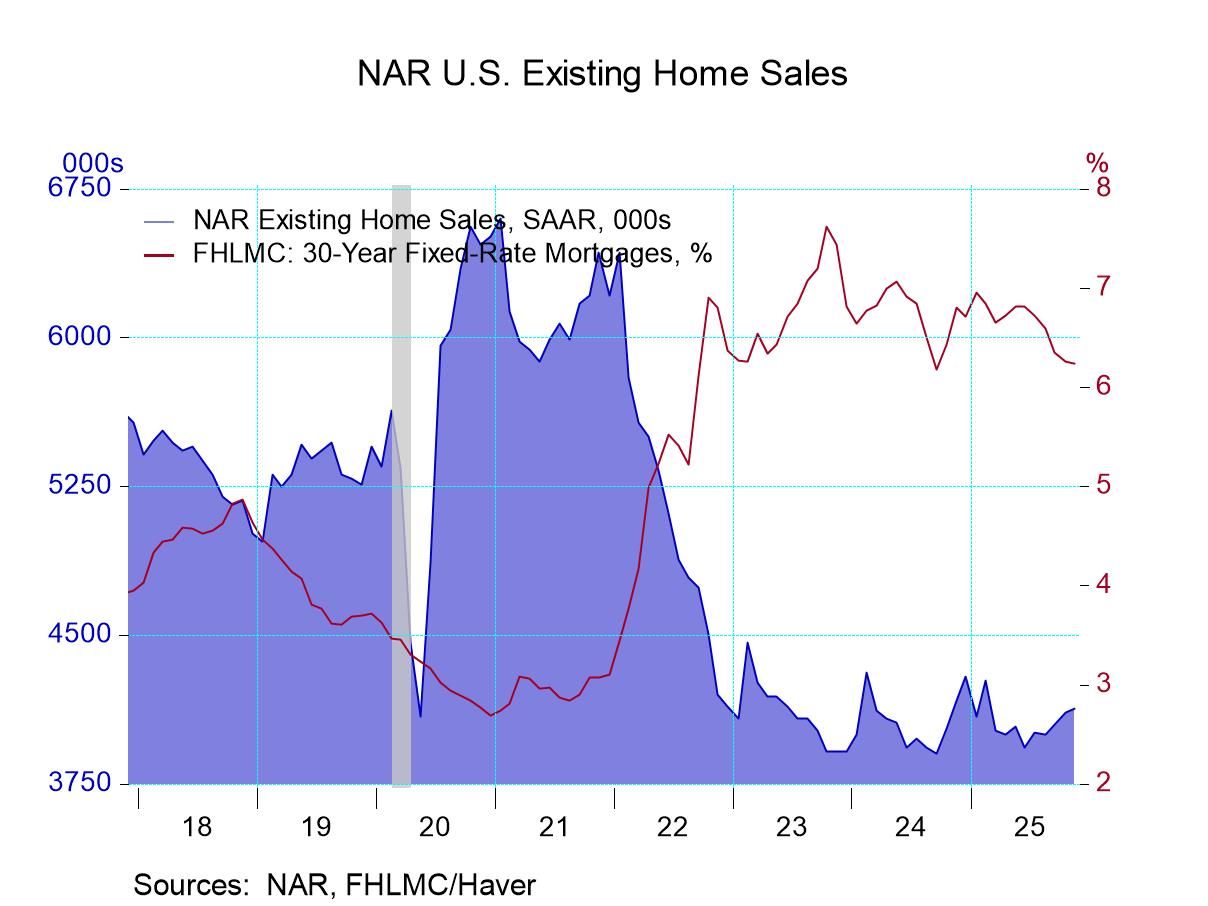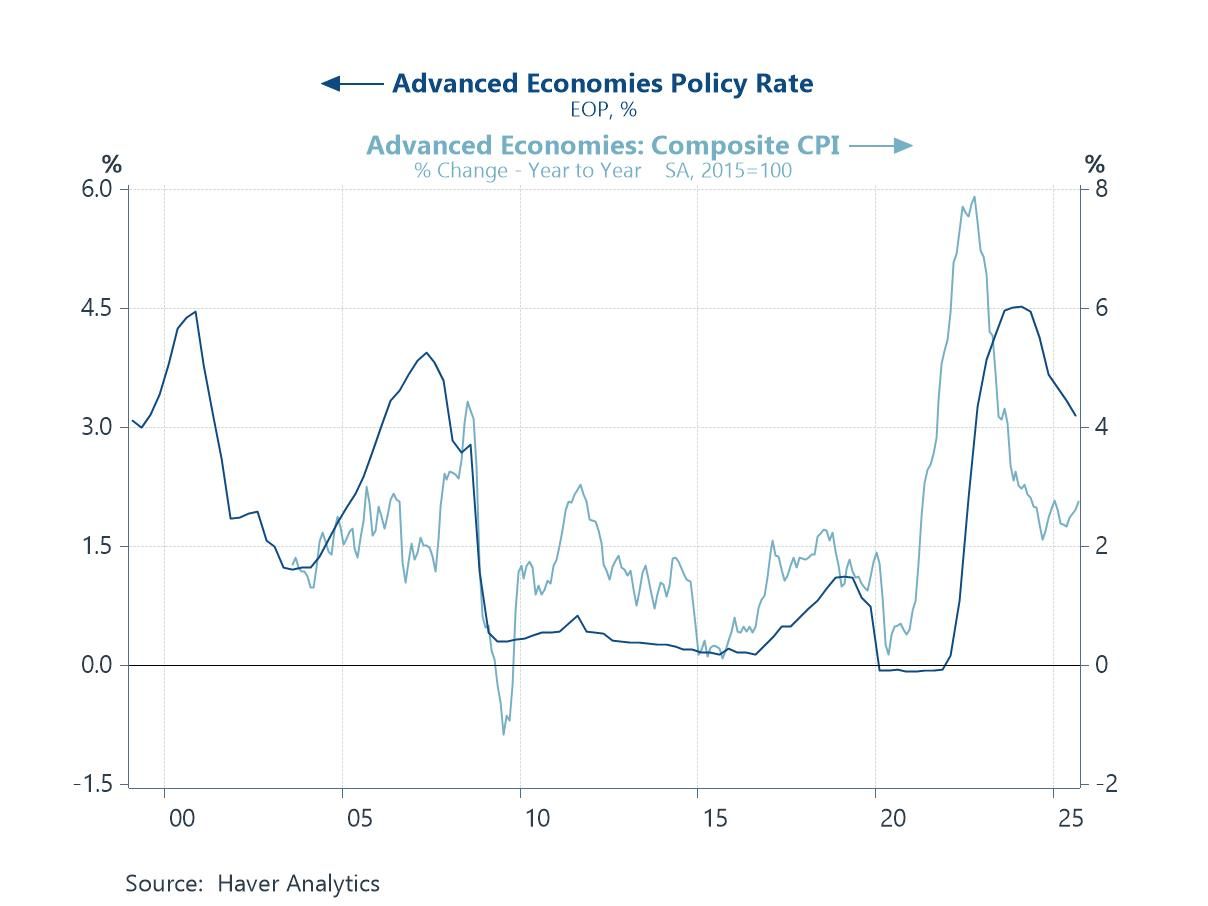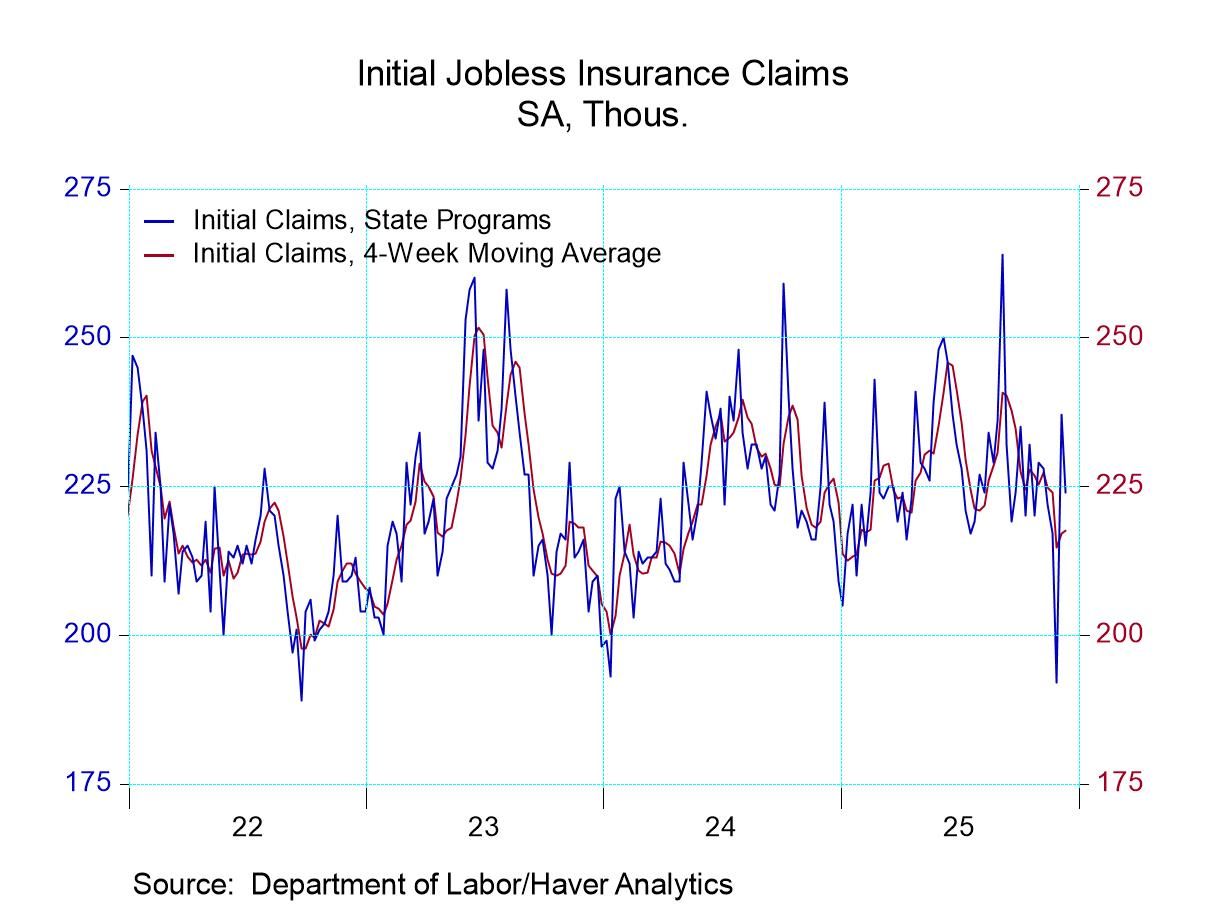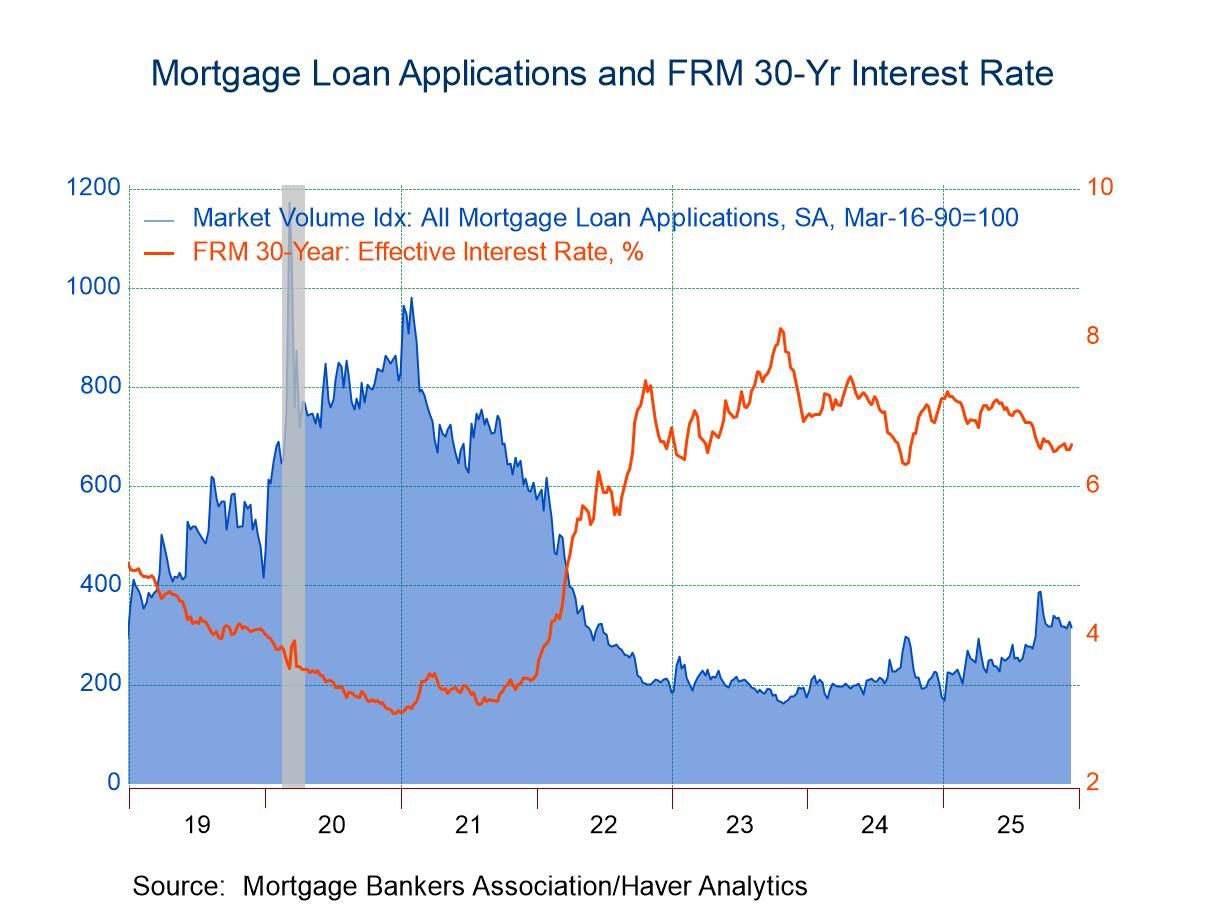U.S. Housing Affordability Weakens in May
by:Tom Moeller
|in:Economy in Brief
Summary
- Home prices & mortgage rates continue to rise.
- Median income declines.
- Affordability falls across country.


The National Association of Realtors' Fixed Rate Mortgage Housing Affordability Index (HAI) declined 3.8% (+5.3% y/y) during May to 97.2 after falling an unrevised 2.3% in April to 101.0, following moderate gains in each of the prior four months. The recent high was 104.9 in September of last year. The level of home affordability remained 8.1% higher than its low of 89.9 in October 2023. The latest level was 45.8% below the high of 179.2 in April 2020.
The decline in affordability in May occurred as the median price of an existing single-family home rose 2.3% (1.3% y/y) to $427,800, and mortgage rates rose to 6.90% from 6.81% in April. The price compared to the record $432,900 in June 2024. The rise in mortgage rates left them above their a low of 6.26% in September of last year, though below a 7.70% high in October of 2023. They remained well above a December 2020 low of 2.73%. In May, the principal & interest payments rose 3.3% (-1.1% y/y) to $2,254 per month, well above the most recent low of $984 in February 2020. Monthly mortgage payments averaged a higher 25.7% of income during May, up from a low of 14.0% of income in April 2020.
The rise in housing costs in May was accompanied by a deterioration in median family income. It fell 0.6% (+4.1% y/y) to $105,204 after rising 1.0% in April. Qualifying income rose 3.3% (-1.1% y/y) to $108,192 after rising 3.5% in April.
Housing affordability declined m/m across the country in May. The index fell 5.7% (+3.1% y/y) to 122.7 in the Midwest, though it remains the most affordable region of the country. In the South, the index declined 2.5% (+7.5% y/y) to 103.0 and the affordability index in the Northeast declined 6.4% (-1.3% y/y) to 86.1. In the West, where homes are the least affordable, the index fell 2.4% (+5.6% y/y) to 69.3 in May.
The Housing Affordability Index (HAI) equals 100 when a median-income borrower qualifies for an 80% mortgage on a median-priced existing single-family home. The HAI had exceeded 100 in each month since July 1990 and reached its all-time high of 213.3 in January 2013.
Data on Housing Affordability can be found in Haver’s REALTOR database. Median home sales prices are also available in USECON. Higher frequency interest rate data are found in SURVEYS, WEEKLY, and DAILY.
Demystifying the Federal Reserve's Balance Sheet from Fed Governor Christopher J. Waller can be found here.


Tom Moeller
AuthorMore in Author Profile »Prior to joining Haver Analytics in 2000, Mr. Moeller worked as the Economist at Chancellor Capital Management from 1985 to 1999. There, he developed comprehensive economic forecasts and interpreted economic data for equity and fixed income portfolio managers. Also at Chancellor, Mr. Moeller worked as an equity analyst and was responsible for researching and rating companies in the economically sensitive automobile and housing industries for investment in Chancellor’s equity portfolio. Prior to joining Chancellor, Mr. Moeller was an Economist at Citibank from 1979 to 1984. He also analyzed pricing behavior in the metals industry for the Council on Wage and Price Stability in Washington, D.C. In 1999, Mr. Moeller received the award for most accurate forecast from the Forecasters' Club of New York. From 1990 to 1992 he was President of the New York Association for Business Economists. Mr. Moeller earned an M.B.A. in Finance from Fordham University, where he graduated in 1987. He holds a Bachelor of Arts in Economics from George Washington University.





 Global
Global
